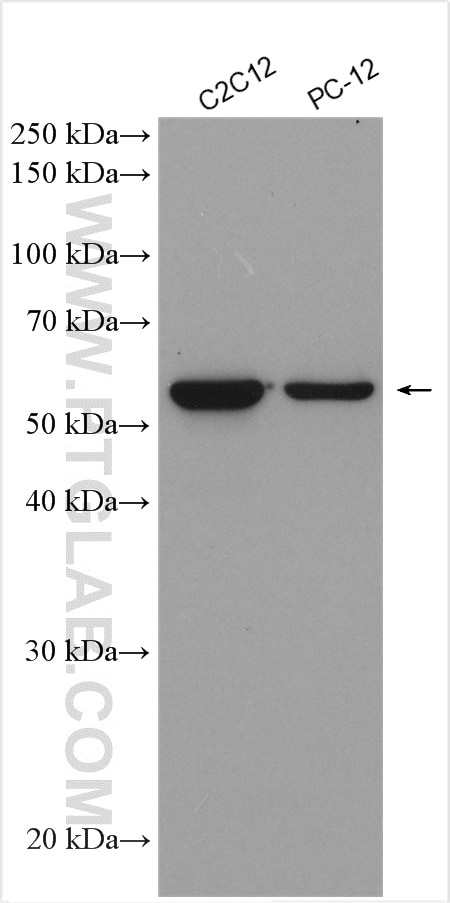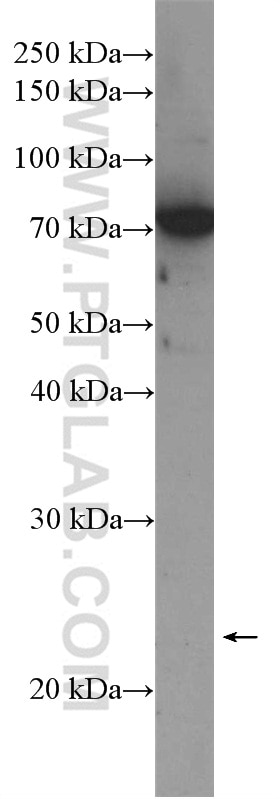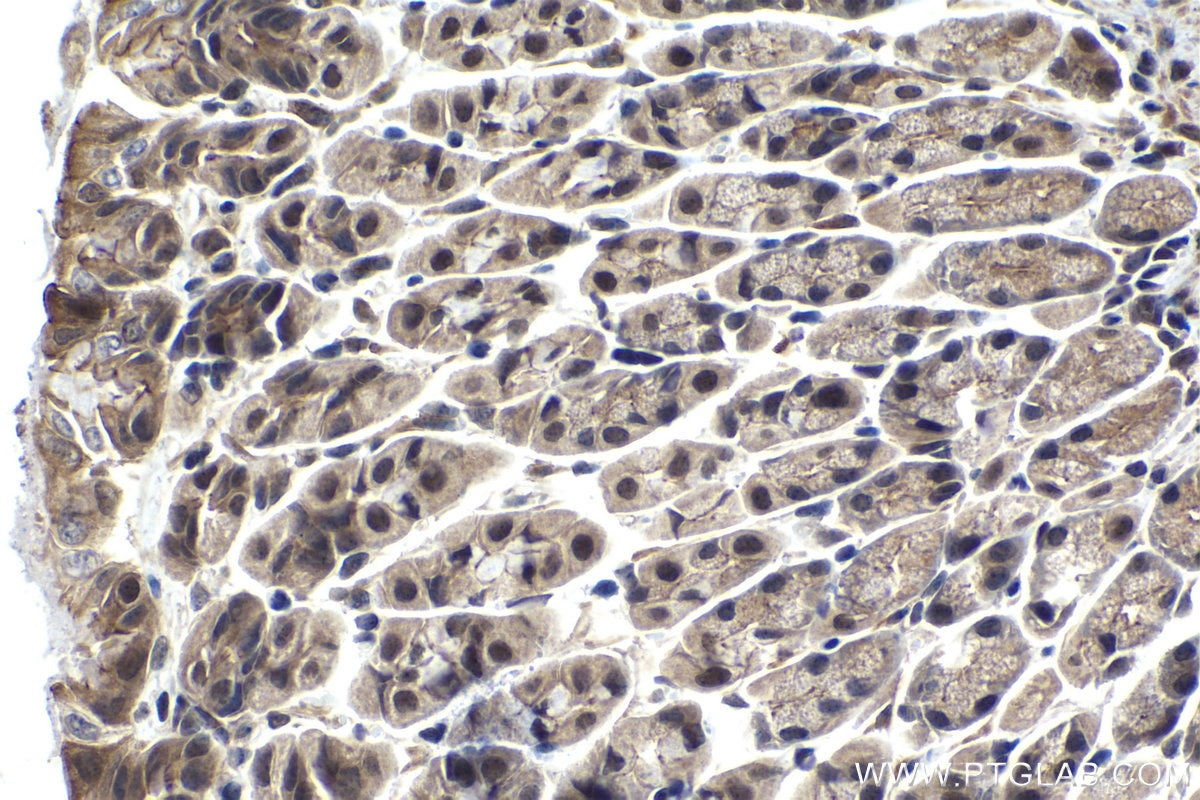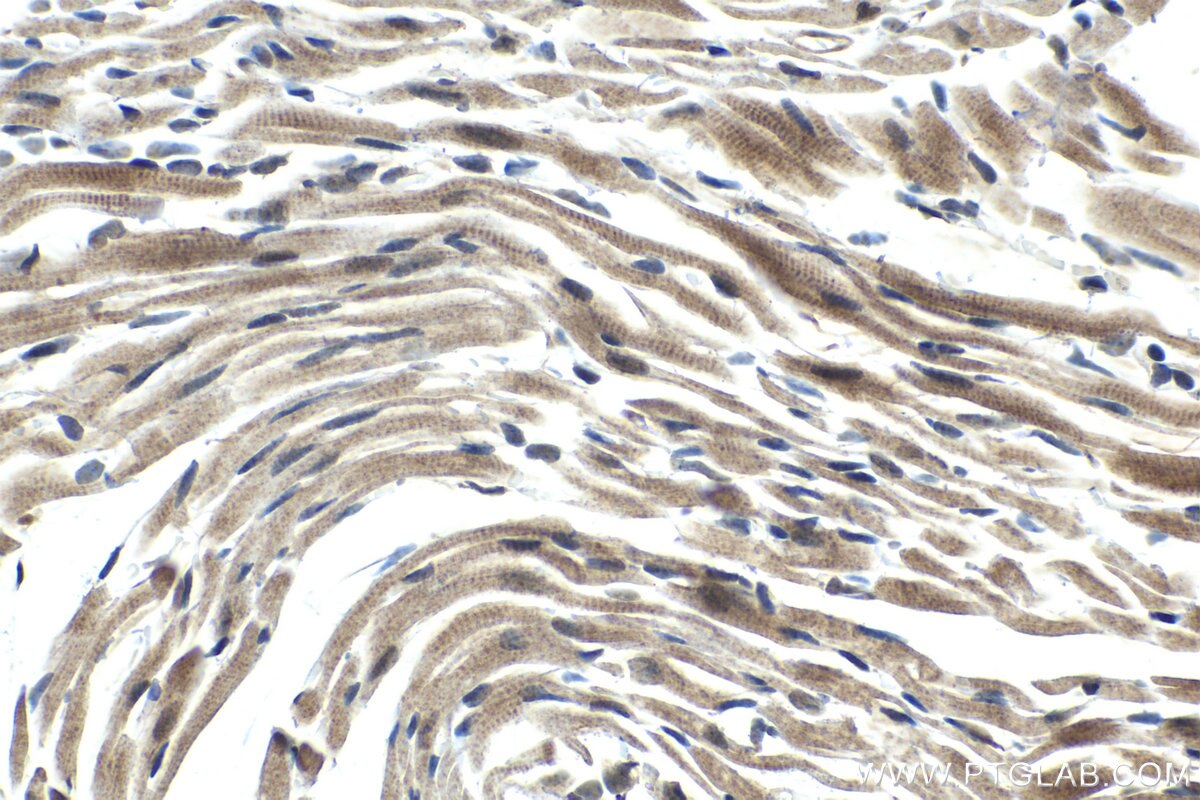Anticorps Polyclonal de lapin anti-PHF1
PHF1 Polyclonal Antibody for WB, IHC, ELISA
Hôte / Isotype
Lapin / IgG
Réactivité testée
Humain, rat, souris
Applications
WB, IHC, ELISA
Conjugaison
Non conjugué
N° de cat : 15663-1-AP
Synonymes
Galerie de données de validation
Applications testées
| Résultats positifs en WB | cellules C2C12, cellules PC-12, tissu cardiaque de souris, tissu hépatique de souris |
| Résultats positifs en IHC | tissu d'estomac de souris, tissu cardiaque de souris il est suggéré de démasquer l'antigène avec un tampon de TE buffer pH 9.0; (*) À défaut, 'le démasquage de l'antigène peut être 'effectué avec un tampon citrate pH 6,0. |
Dilution recommandée
| Application | Dilution |
|---|---|
| Western Blot (WB) | WB : 1:1000-1:6000 |
| Immunohistochimie (IHC) | IHC : 1:250-1:1000 |
| It is recommended that this reagent should be titrated in each testing system to obtain optimal results. | |
| Sample-dependent, check data in validation data gallery | |
Applications publiées
| WB | See 4 publications below |
Informations sur le produit
15663-1-AP cible PHF1 dans les applications de WB, IHC, ELISA et montre une réactivité avec des échantillons Humain, rat, souris
| Réactivité | Humain, rat, souris |
| Réactivité citée | Humain, souris |
| Hôte / Isotype | Lapin / IgG |
| Clonalité | Polyclonal |
| Type | Anticorps |
| Immunogène | PHF1 Protéine recombinante Ag8094 |
| Nom complet | PHD finger protein 1 |
| Masse moléculaire calculée | 567 aa, 62 kDa |
| Poids moléculaire observé | 62-70 kDa |
| Numéro d’acquisition GenBank | BC008834 |
| Symbole du gène | PHF1 |
| Identification du gène (NCBI) | 5252 |
| Conjugaison | Non conjugué |
| Forme | Liquide |
| Méthode de purification | Purification par affinité contre l'antigène |
| Tampon de stockage | PBS with 0.02% sodium azide and 50% glycerol |
| Conditions de stockage | Stocker à -20°C. Stable pendant un an après l'expédition. L'aliquotage n'est pas nécessaire pour le stockage à -20oC Les 20ul contiennent 0,1% de BSA. |
Informations générales
Background
Plant homeodomain finger protein 1 (PHF1) has a specific role in histone modification and in non-homologous end joining. It is a human homolog of the Drosophila protein Polycomb-like protein.
PHF1 acts by binding to H3K36me3, a mark for transcriptional activation, and recruiting the PRC2 complex: it is however unclear whether recruitment of the PRC2 complex to H3K36me3 leads to enhance or inhibit H3K27me3 methylation mediated by the PRC2 complex. PHF1 regulates also p53/TP53 stability.
What is the molecular weight of PHF1?
62 kDa
What is the structure of PHF1?
PHF1 contains two zinc finger-like plant homeodomain (PHD) sequences, a Cys4-His-Cys3 motif that is able to recognize and modify histone tails, making it important in epigenetic regulation (PMID: 18682256). It also contains a Tudor domain, a sequence of approximately 60 amino acids that has also been shown to bind to methylated histone tails (PMID: 16601153). The sequence of PHF1 is similar to the Polycomb family of genes in Drosophila, chromatin remodeling genes that act in embryogenesis.
What is the role of PHF1?
PHF1 has a key role in histone modification. It acts by binding to the histone H3K36me3, a lysine methylation of histone H3 that is a mark for transcriptional activation (PMID: 17189264). PHF1 then recruits Polycomb repressive complex 2 (PRC2) to mark genes for repression. These epigenetic chromatin modifiers are important in cancer development, gene silencing, and stem cell maintenance.
PHF1 is also found to be recruited to double-strand breaks in DNA and plays an important part in the repair in non-homologous end joining (PMID: 18385154), the main DNA repair process in which ends of DNA are ligated without a homologous template. Interacting with proteins involved in DNA damage response, PH1 appears to have a role beyond the polycomb function (PMID: 18385154).
Protocole
| Product Specific Protocols | |
|---|---|
| WB protocol for PHF1 antibody 15663-1-AP | Download protocol |
| IHC protocol for PHF1 antibody 15663-1-AP | Download protocol |
| Standard Protocols | |
|---|---|
| Click here to view our Standard Protocols |
Publications
| Species | Application | Title |
|---|---|---|
Mol Cell A Family of Vertebrate-Specific Polycombs Encoded by the LCOR/LCORL Genes Balance PRC2 Subtype Activities. | ||
Mol Cell PALI1 promotes tumor growth through competitive recruitment of PRC2 to G9A-target chromatin for dual epigenetic silencing | ||
Cell Death Dis Dexmedetomidine improves the circulatory dysfunction of the glymphatic system induced by sevoflurane through the PI3K/AKT/ΔFosB/AQP4 pathway in young mice | ||
Mol Cancer A multidimensional recommendation framework for identifying biological targets to aid the diagnosis and treatment of liver metastasis in patients with colorectal cancer |








